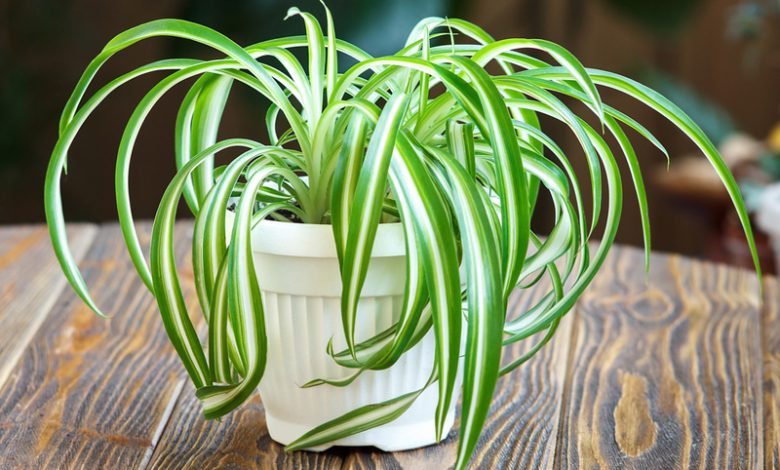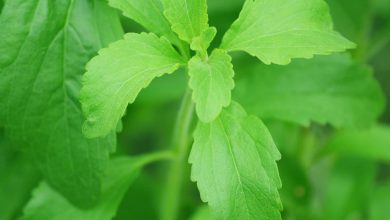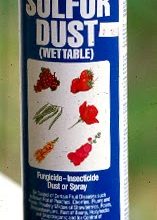Bond of Love or Spider Plant: [Care, Planting, Irrigation and Substrate]

 The ribbon or bow of love, also known as the spider plant, is a perennial or long-lasting indoor plant, it was born in the bowels of the African continent and from there it spread without major problems throughout the world, due to its great ability to multiply.
The ribbon or bow of love, also known as the spider plant, is a perennial or long-lasting indoor plant, it was born in the bowels of the African continent and from there it spread without major problems throughout the world, due to its great ability to multiply.
It is known in different ways: love ties or ribbon; tie plant; spider plant and malamadre. Its scientific name is Chlorophytum comosum.
To date, more than 200 different species of this unique plant have been identified, also known in many parts of the world as malamadre, because it proliferates with such ease that many children multiply indiscriminately, which take about 15 days in optimal conditions around of the main.
Of course, they reproduce in large numbers after a discreet white flower emerges at the tip of their stems and becomes a rooted seedling that we can plant in new pots.
So its flowers have a reproductive function of great miraculous power, together with very active roots that store a lot of water and characterize the rusticity
Did you know…?Something very positive that love ribbon silver has is its perfect purifying capacity for environments affected by carbon monoxide and formaldehyde from aerosols, various varnishes and even products from the cosmetic industry.
So don’t forget to have one or more love ties at home.
Here we will tell you how you should always keep it radiant. And although it is very difficult to kill her, given her enormous resistance, there are practical tips that help make her more visible.
Characteristics of the spider plant or love ties
- Plant family: herbaceous plants (anthericaceae).
- Genus: Chlorophyta.
- Class: Angiosperms (Magnoliopsida).
- Order: asparagus.
- Species: spider plant (chlorophytum comosum).
- Trivial names: spider plant, airplane plant, ribbon plant, spider ivy, St. Bernard lily, hen and chickens.
- Origin: South Africa.
- Perennial herbaceous plant.
- Height: up to 60 cm.
- Bloom: all year round with small white flowers with long flower stalks, long dense leaves arranged in a rosette shape.
Temperature: Where to sow the bond of love?
Although it is such a noble plant that it does not need much care, do not allow it to live in an environment below 7°C, because it will affect it tremendously outdoors.
But in climates up to 27 °C, she grows and multiplies easily.
Its behavior at home is also good in cold rooms where there are low temperatures and little light. Humidity likes it very much.
Changing climates are not to his liking, sudden changes in temperature make him sick. If this is your case, you better always keep it in a place in your house with good lighting and constant humidity. Do not take it out in that circumstance to a garden or terrace.
Light: What needs do you have?
 What is completely true is that although it is a very, very resistant plant, it does not like being exposed to intense sunlight for a long time.
What is completely true is that although it is a very, very resistant plant, it does not like being exposed to intense sunlight for a long time.
Its multiple green -cream leaves will begin to burn, putting your health at risk. Don’t ever do it.
Inside the house it is preferable to have him in a naturally lit area but not so close to a window. She always prefers good light, but not direct light because her leaves are disfigured until they wither.
It is so noble that it grows without problems in a bathroom, in a room… In fact, it is super adaptable.
Substrate and Fertilizer: How do we prepare the land?
The Ribbon does not ask for much. It’s the truth. But a high quality substrate is highly recommended so that she can multiply with her flowering shoots quickly.
Substrates such as vermiculite or coconut fiber are perfect for its healthy development, when you plant it in a pot, because for exteriors it will be enough to lavish it with well-draining soil. One with sand is ideal.
Irrigation: How and how often do we water?
 Lots of moisture without turning the soil into a puddle, it will be ideal.
Lots of moisture without turning the soil into a puddle, it will be ideal.
Although this plant withstands periods of drought thanks to the great capacity of its roots to store water, they can wrinkle until they lose their shine, showiness and color (they turn pale) due to lack of irrigation. They come back to life if this blunder is corrected, because their tuberous roots are water reserve tanks.
Expert gardeners recommend that it should be watered with confidence just a couple of times a week during the spring and summer periods. While in winter it is enough to do the irrigation every ten days.
Care of the spider plant or bond of love
The spider plant is an undemanding plant, surviving in many situations. Plant lovers, however, can make simple arrangements to create a healthy living environment.
 Proper care ensures that chlorophytum comosum remains vital for decades and multiplies rapidly.
Proper care ensures that chlorophytum comosum remains vital for decades and multiplies rapidly.
Pests and diseases of this plant
Because the spider plant is hardy and easy to maintain, diseases rarely occur.
Dry leaves often point to waterlogging which should be removed as soon as possible by draining excess water.
If waterlogging persists, the plant can be attacked by bacteria that cause severe bacterial wet rot. They will spread quickly and can hardly be fought. Therefore, affected plants must be removed and never come into contact with healthy ones.




